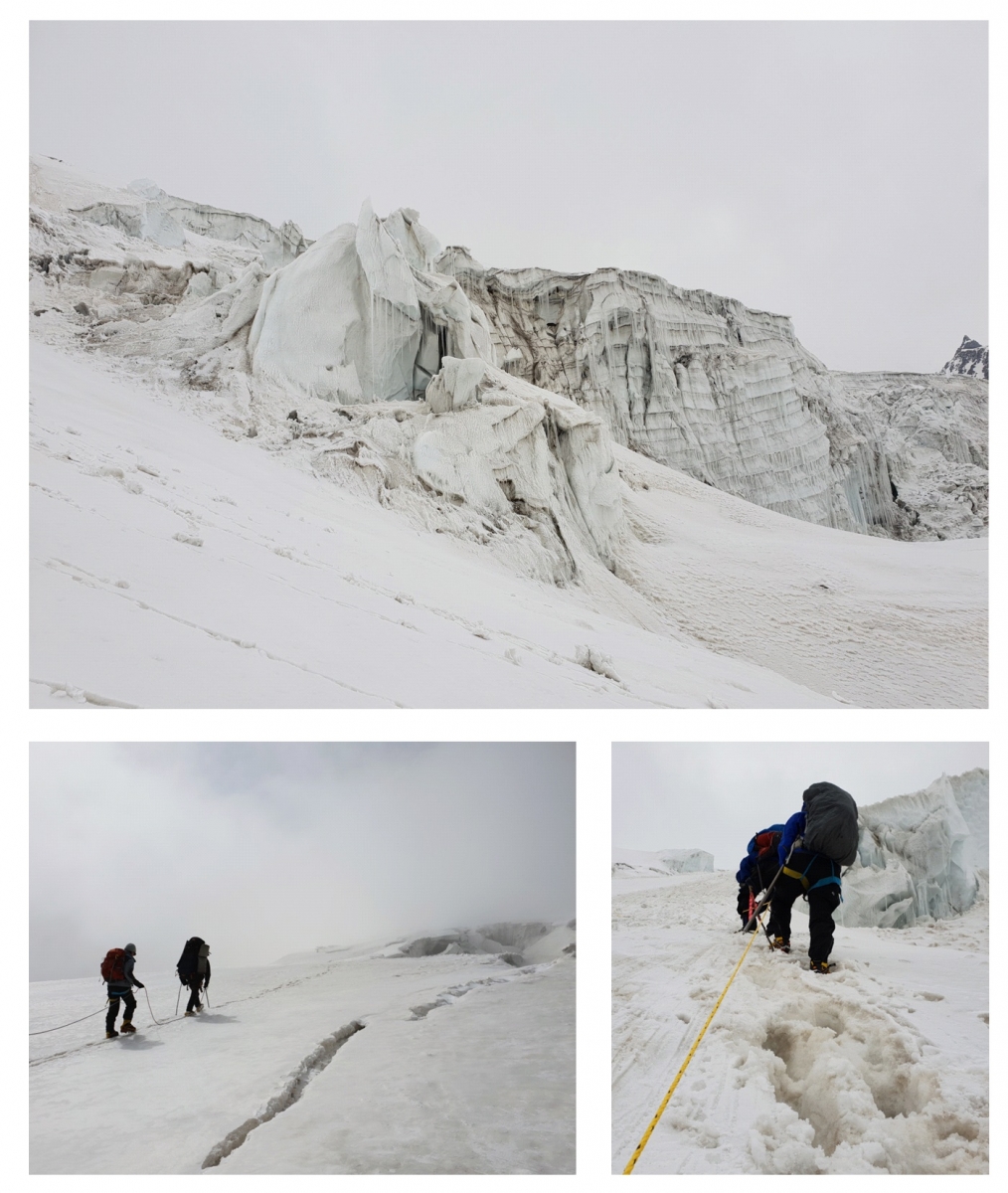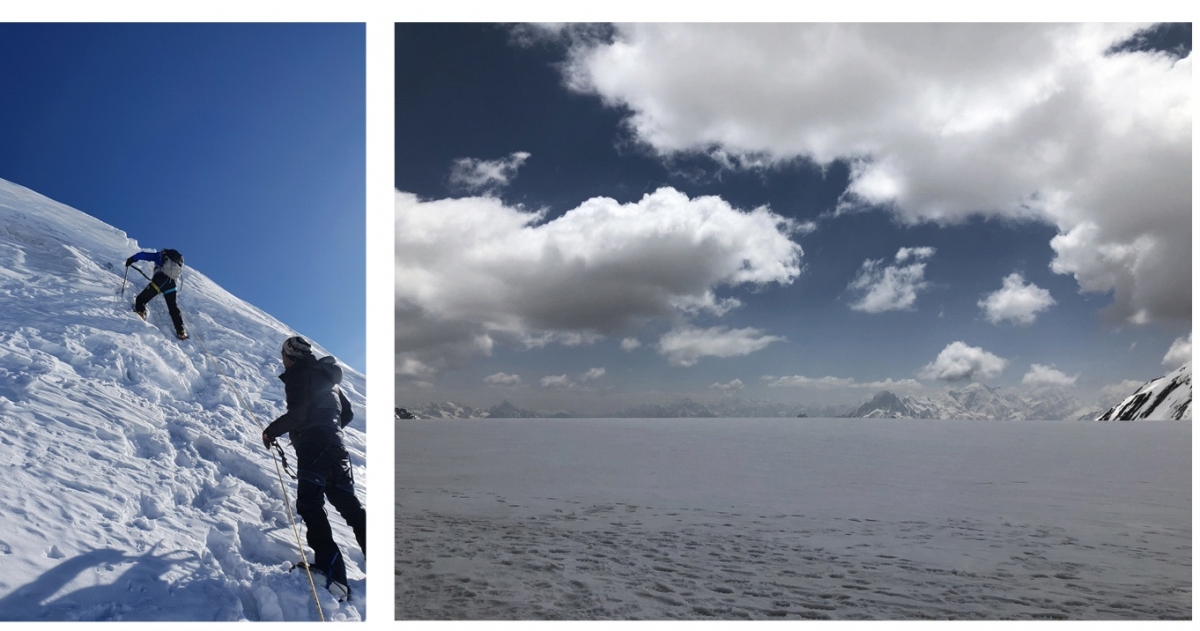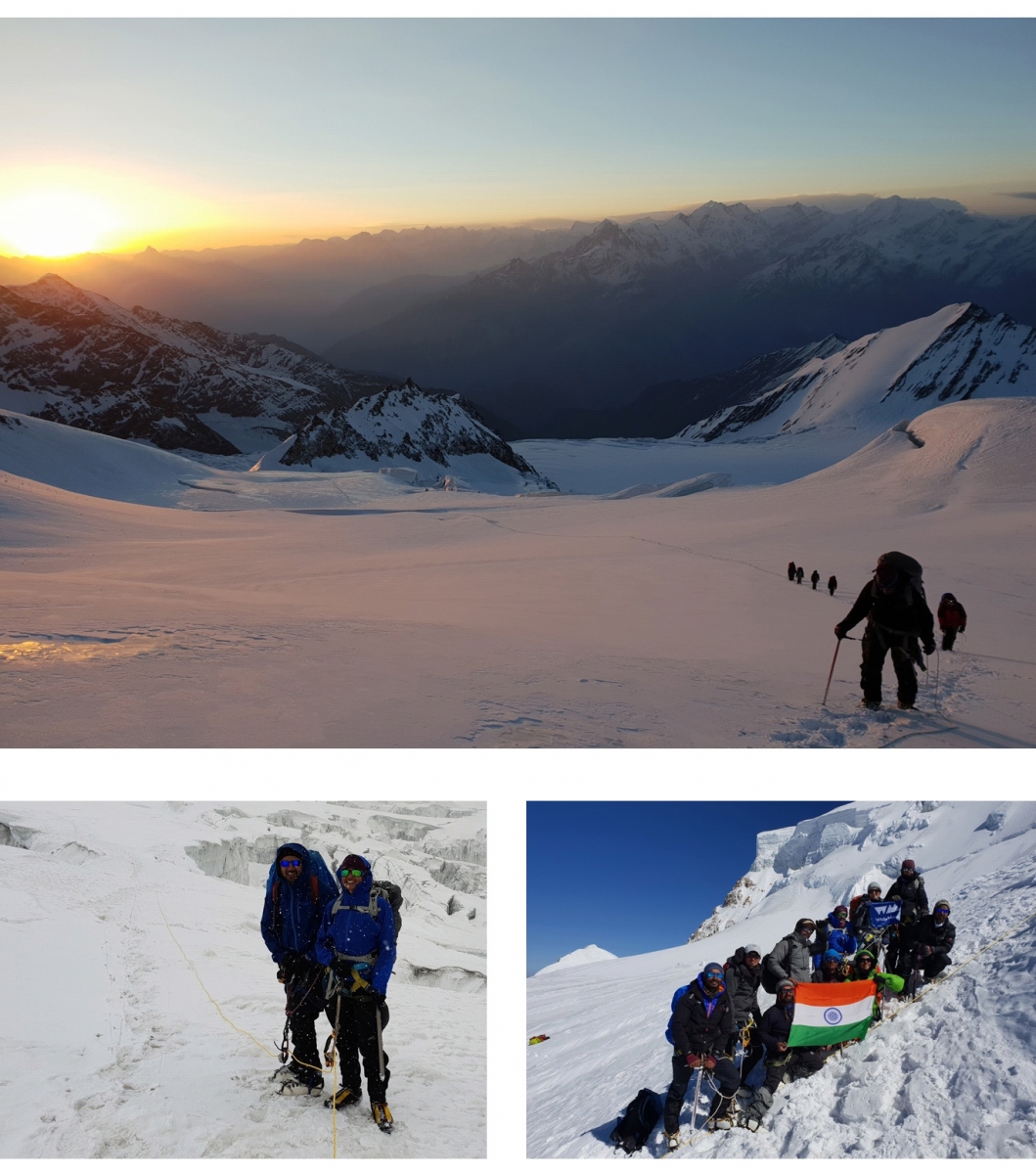WhiteMagic Adventure Blog
A tale from the Monkey's Tail
A tale from the Monkey's Tail
“Ha, ha!” I heard Dagguji laughing. He was the owner of Monal Tourist Home, Uttarkasi where we stayed on the first night of our journey. It wasn’t exactly laughter but it was how he completed his sentences. He would say, “So, do you want tea? Ha, ha!” or “The weather is wonderful this morning ha, ha!” Even though we found it odd at first, we began emulating him.
Our jovial beginning with Dagguji seemed like the right start to Bandarpoonch (monkey’s tail), a trek full of surprises. Avilash Bisht, who had ably led my previous trek, wasn’t going to make it on this one. His leadership was one of the reasons I chose the trek but he had to attend to a family emergency. And then there was my forearm - just the day before we departed, I developed a painful muscle pull. Ouch. If that wasn’t enough, on our first day there was a mini earth quake.
Bandarpoonch is playful only by name. At 6,316m, the mountain stands tall in the Garhwal region of the Himalayas. Legend has it that Hanuman flew to its summit to extinguish his tail when it caught fire during the battle at Lanka. Acclaimed mountaineer Tenzing Norgay was one of the first people to summit the mountain. What choice did I have other than to simply “ha, ha” my way up this monkey’s tail.
After driving for 2.5 hours from Uttarkasi to Sukhi, our trek began with a steady five hour walk. We crossed meadows and lush green forests and steadily saw the landscape change to white. Some days were short but some were long and arduous. By Day 3, we reached basecamp where we spent the next four nights. We would trek up higher and come back to sleep to lower ground. It helped our bodies acclimatize to higher altitude.
The days went by quickly and sometimes very slowly. And even more slowly when all we had to do was wait. Patiently or impatiently. We would wait in the tent for the next instruction. Wait for the weather. Wait for the body to acclimatize. Wait for the right time to summit. With limited distractions and unlimited time, I never realized waiting would be such a tough thing to do.
Slowly, we adopted to the pace of Nature where nothing is rushed but everything is accomplished. Learning to wait whispered to me the value of patience. A certain pattern of patience that achieves more than force ever does. Like how water moulds mountains over time and in-turn allows the mountain to provide direction to its flow. Patiently and silently, Nature shapes our lives and permeates our spirit. And yet we try to control so much of our lives. Why?
On our last day at basecamp, we were in for a surprise. Avilash suddenly appeared to lead us for the rest of the trek. Sanjeev Rai who had wonderfully guided our group until then, retreated allowing Avilash to go forth. That switch was so seamless that it left a lasting impression on me.
The day we eventually moved from camp 1 to summit camp was our most adventurous day. We used ascenders (jumars) to climb and negotiate steep sections of the mountain. When we finally reached a snow field, we were abruptly caught in a full blown blizzard. We had to push ourselves further and further, while cutting through a crazy 50km/hour wind.
 T : Palace of Wonder | L: Crevasse Laden Bandarpunch | R: Ascending using Jumars.
T : Palace of Wonder | L: Crevasse Laden Bandarpunch | R: Ascending using Jumars.
When we spotted our orange tents amidst all the whiteness, it was such a relief. Just as we sat inside to remove our shoes, we were in for a surprise again. The wind blew our tents down. Poof. We re-anchored them. And just like that the wind stopped. Quiet and still. But it returned at night, flapping our tents continuously. It felt like we were in a boat that noisily sailed through a sleeping mountain.
Avilash decided that we would attempt the summit from the south face instead of the south-east face as planned. There were too many crevasses on the south-east side and we could not forge a safe route through them.
 L : Negotiating the ice wall | R: A Slice of Heaven
L : Negotiating the ice wall | R: A Slice of Heaven
As is the case with summits, our final climb began at night. It was a long walk with cold winds blowing all the time. That invariably led to my hands losing all sensation. They froze. It took about 45 minutes of warming my fingers inside down mittens before I was able to wiggle them more normally.
As we carried on, Avilash warned us, “Danger is lurking everywhere on this mountain. Crevasses are the biggest challenges here - some of those are very risky. Take each step with care. You have to be mindful every single minute.”
Soon, there was a section of a near 90 degree ice-wall. My heart skipped a beat. It hinted that we were close to our final destination. We crossed this wall, traversed a narrow section of the mountain and waited for our entire group. We were quite close to the summit, possibly 200-300 mts away. That’s when Bandarpoonch threw its final surprise.
The mountain didn’t allow us to go further. In front of us was a steep, icy slope - magical in its blue-white texture that comes about when layers of snow gets compressed into ice. Air bubbles squeeze themselves out and ice crystals enlarge making the structure appear blue. Avilash and his team of sherpas surveyed the formation conditions on the slope in front of us and determined that we wouldn’t able to place the anchors safely and climb the hard, steep and slippery ice safely.
That didn’t deter our spirits. The weather was gorgeous and all of us were raring to go. But Bandarpoonch decided to hide its tail by presenting us with technical challenges. And that was fine. Absolutely fine. It was surprisingly easy enough for us to accept that after all the effort - months of training and preparation, followed by days of trekking - we would turn back when we were so close to the summit.
Edmund Hillary said it’s not the mountains we conquer but ourselves. It’s true but I wonder what prompted him to say that. Was it when the mountains allowed him to climb on or when they didn’t?
Climbing a mountain is like an explosion inside of you that makes you lose contact with the world. Did the earth feel this way after the big bang? You are like a speck floating and floating in an endless space of whiteness. From the distance, you can’t help but observe the smallness of the human form against Nature. Your being is larger than life itself. And yet you are smaller than a flake of snow. What is it exactly that we seek when we run after things in life?
After those feelings of quest and conquest subside, a silence dawns. It’s not the kind of silence when you are merely quiet. It’s the kind of silence that fills you with purity, only made purer with the breath that mountains can offer. It’s in those moments that your heart ebbs with love and gratitude for those who love you, care for you and contribute to you. Silently.
Yes, you can say what Dagguji would've naturally said at this point: “ha, ha!”


Add new comment